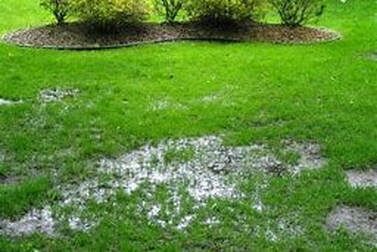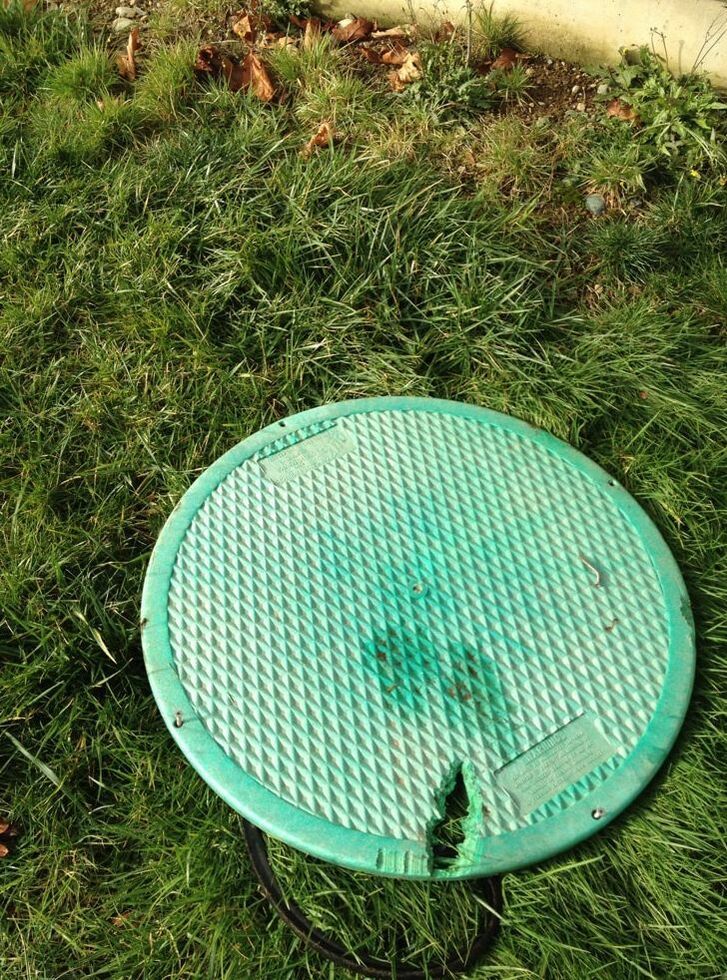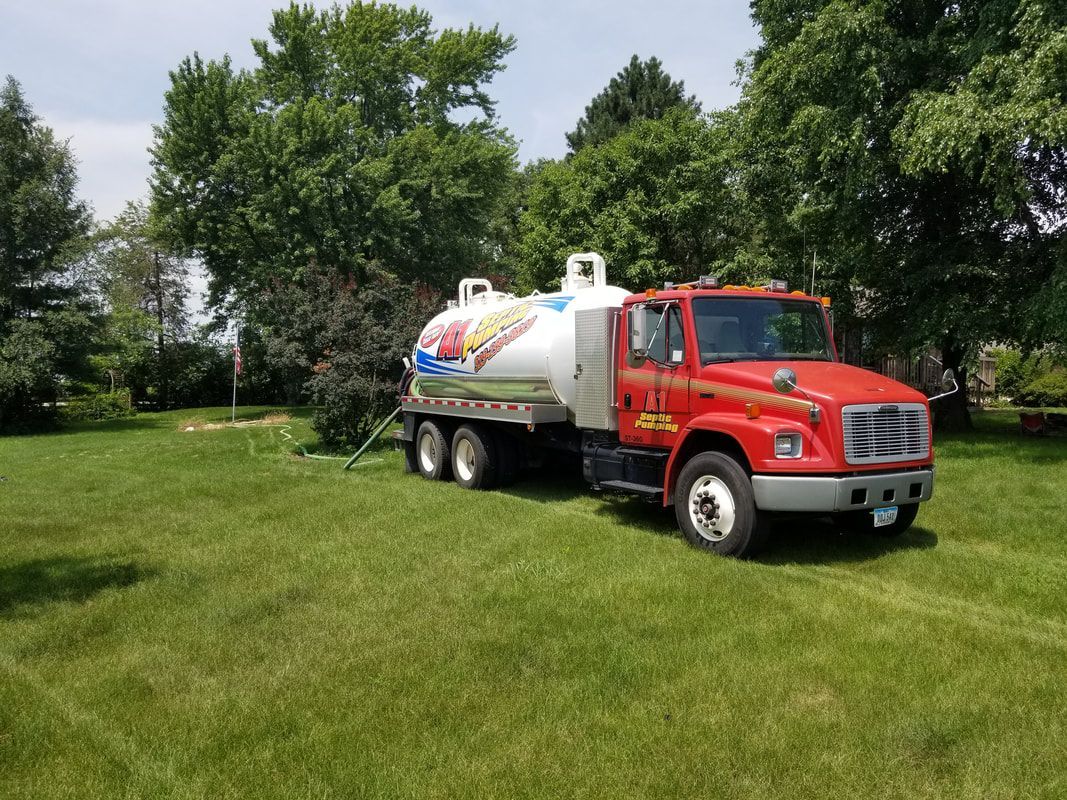SEPTIC PUMPING & MAINTENANCE
Your septic system has a very important job. It keeps waste moving away from your home or business space. A typical septic tank is a large buried rectangular or cylindrical container made of concrete or plastic. Your septic tank acts like a huge filter with two major parts: the tank and drain field. Wastewater from your toilets, sinks, washing machines, and showers enter the septic tank from your home. Waste goes in, solids settle to the bottom and lighter material like fat, and grease float on top while wastewater flows out to the leech field. It is important to pump your tank every 2-3 years. Over time the solids on the bottom of the tank begin to build up and the grease layer on top gets thick and hard. It is vital to the function of the tank to remove the material to keep it working at optimum capacity and keep thick material from escaping the tank and clogging your leech field.
We recommend pumping septic tanks every 2-3 years.
Newer septic tanks also have a filter that need to be cleaned every
6 months. This is done by simply opening the tank, pulling it out, and spraying it down completely with a garden hose.
Things to note: The bigger the septic tank opening, the better. We can do a more thorough job cleaning the sides and bottom if we have an opening we can see into. The manhole size openings are far better than the 6-8” PVC pipe.
Your partners in septic care service are A-1 Septic & Pumping Services. Our local team makes it easy to handle proper maintenance and emergency repairs. Speak with us today about your septic system needs!
PROBLEMS WITH YOUR SEPTIC TANK WON’T KEEP REGULAR HOURS, AND NEITHER DO WE. WE ARE AVAILABLE TO HELP 24/7, CALL US FOR ALL YOUR SEPTIC TANK NEEDS.

ROUTINE MAINTENANCE
Think of routine maintenance as “preventative maintenance,” the cost of pumping your septic tank every
2-3 years is likely to be a fraction of the cost of having to replace your system due to neglect. Also, most new tanks have a filter. The filter works as a barrier, it keeps sludge leaving your tank and entering into your drain field lines. The filter needs to be taken out and cleaned (sprayed thoroughly with a garden hose) and then put back in its place.
This should be done every six months.
WARNING SIGNS OF A
SYSTEM FAILURE
Don’t ignore the warnings signs of a system failure. Some signs to look for include: water draining slowly or not at all, a gurgling sound coming from your pipes, soggy or damp soil in your yard (usually over your drain field), grass is greener or grows faster in a certain spot in your yard, and lastly sewage back up in your drains. If you are experiencing any of these or something not listed, give us a call and we can help you determine what needs to be done.


IMPORTANT INFORMATION ALL HOMEOWNER’S NEED TO KNOW
If you notice damage to your septic tank lids (cracks, missing screws, etc.) immediately take action and have repairs made.
Never allow children to play on or near septic tank lids.
Avoid flushing harmful or indigestible materials into the septic tank—Some items that should not be flushed, but not limited to, include: wet wipes, facial tissues, towels, napkins, coffee grinds, cigarette butts, sanitary napkins and tampons, condoms, cotton balls, dental floss, and band aids.
Don’t use excessive amounts of bleach or other cleaning products. Too much will interfere with the bacterial decomposition.
YOUR COMPLETE SOURCE OF
SEPTIC CARE
- Routine Maintenance
- Time of Transfer Inspections
- Emergency Service

© 2019 The content on this website is owned by us and our licensors. Do not copy any content (including images) without our consent.
